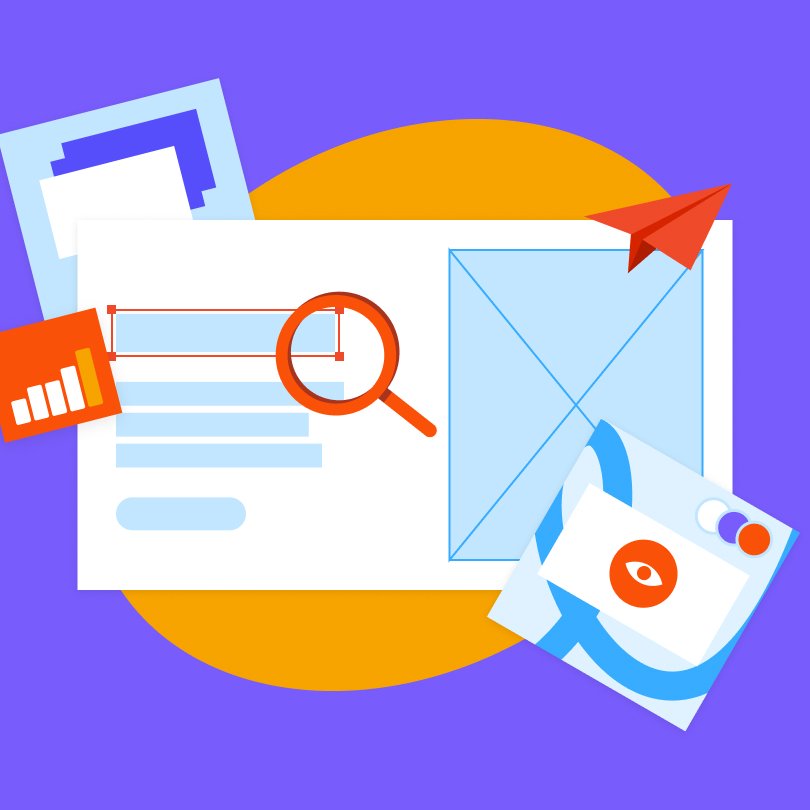Unlike regular websites, where visitors click and scroll multiple times to see a specific product, landing pages are more straightforward. As a more accessible medium to navigate, they can effectively drive organic traffic.
That makes them an invaluable tool in attracting leads and accelerating conversions. However, that’s impossible to accomplish solely by creating an engaging landing page.
You must also SEO optimize it to ensure it reaches your target audience and provides a stellar user experience. Otherwise, potential customers and clients might never find your products and services.
This guide will clarify everything you should know about SEO landing pages and the best practices to implement.
What is a Landing Page?
A landing page refers to an independent page focusing on a specific service or product instead of promoting your company or business as a whole. Its strategic design has the goal of generating leads and closing sales.
Potential customers may find it through a simple internet search or by following a link from your social media post, PPC campaign, or blog posts. Landing pages typically prompt visitors to complete a specific action, such as scheduling a discovery call or submitting a contact form.
Although these web pages are often the last phase before a customer makes a purchase, they must meet particular criteria. For instance, they should nudge visitors to proceed and do what the CTA encourages.
The average conversion rate across industries is 9.7 percent, but you can increase that level with compelling SEO content and techniques.
What is Landing Page SEO Optimization?
SEO helps you optimize your landing page performance. It enables search engine bot crawling and indexing, making it more discoverable and accessible.
Even though it’s fundamental to create relevant content, you must also consider whether you’re using the right keywords and meta tags. Moreover, you should check if every link on the landing page works and takes visitors in the intended direction.
SEO landing pages provide an excellent UX, which translates to fast loading times, seamless navigation, and helpful information that prevents high bounce rates. But they must also be visible in SERPs.
You can accomplish that by combining various practices designed to help you drive visitor conversions.
The Importance of SEO Practices in Increasing the Effectiveness of Your Landing Page
Average customers will find plenty of options for whatever solution, product, or service they seek. That allows them to be picky and only choose the best one.
When making that decision, most customers will consider whether the landing page is credible and how high in the search results it ranks. Hence, a good position in SERPs and a stellar first impression make all the difference.
Your brand will enjoy higher conversions with well-thought-out SEO practices, whether you’re an independent professional, eCommerce, or an established SaaS company. If your landing page hasn’t been effective in bringing in visitors and moving them through the funnel, the odds are you haven’t optimized it.
Keep reading to learn the best landing page SEO practices to increase sales.
The Most Effective SEO Landing Page Practices
1. Conduct a Thorough Keyword Research
Meticulous keyword research is the key to a successful landing page. The goal is to transform targeted traffic into conversions and leads, which is why you should choose bottom-funnel or transactional keywords.
That requires identifying relevant long-tail keywords, starting with understanding your target audience. Dive into their needs, objectives, and pain points to grasp their search intent.
Consider your potential customers’ questions when looking for your product or service. Use those insights to brainstorm broad seed keywords they might use. For instance, if you provide candidate screening software, type candidate screening, and add modifiers to expand ideas.
You can try keyword research tools like Google Keyword Planner, SEMrush, Ahrefs, Ubersuggest, and Moz Keyword Explorer.
These can help you identify relevant keywords and search volume and filter by search intent. After choosing the best ones, build content around those keywords in a logical and natural way.
Keep in mind that you’re not writing for bots but for humans. Hence, every word should flow smoothly and appeal to potential leads.
But avoid keyword stuffing, as search engine algorithms will detect it, impacting your position in the SERPs. Skilled SEO copywriting helps avoid that and gives more context to your landing page with relevant secondary keywords.
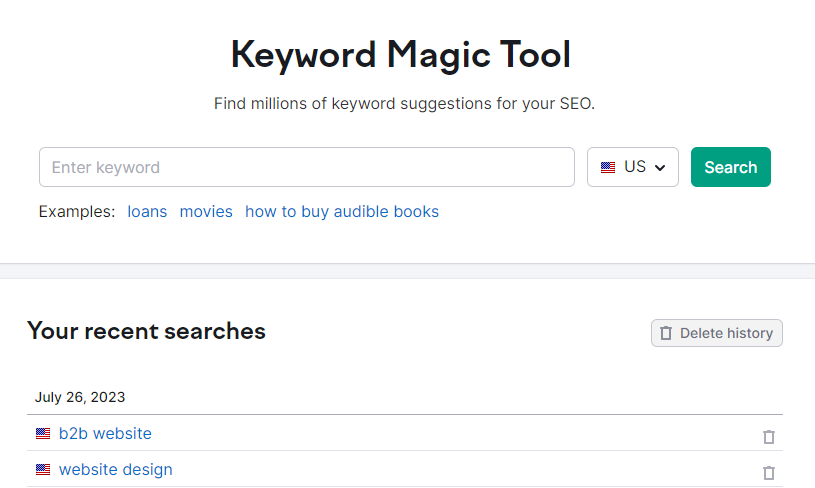
2. Create Curated Content That Meets the User Search Intent
Your landing page should provide what users want, need, and expect to see to meet their search intent to a greater extent. Otherwise, you’ll confuse them and make them look for a more compatible product or service.
When creating and optimizing a landing page, put yourself in your customers’ shoes. Consider what they expect and hope to see and whether your intended design and SEO match that.
Get an idea of where to start by running a quick Google search and checking what appears with the keywords you plan to use. However, never copy others, especially your competition.
Instead, let other well-performing landing pages guide you and help you understand your target audience. That way, it will be easier to brainstorm content, visuals, and design that corresponds to their search intent.
Every element should complement your SEO efforts, including the colors, headings, and imagery.
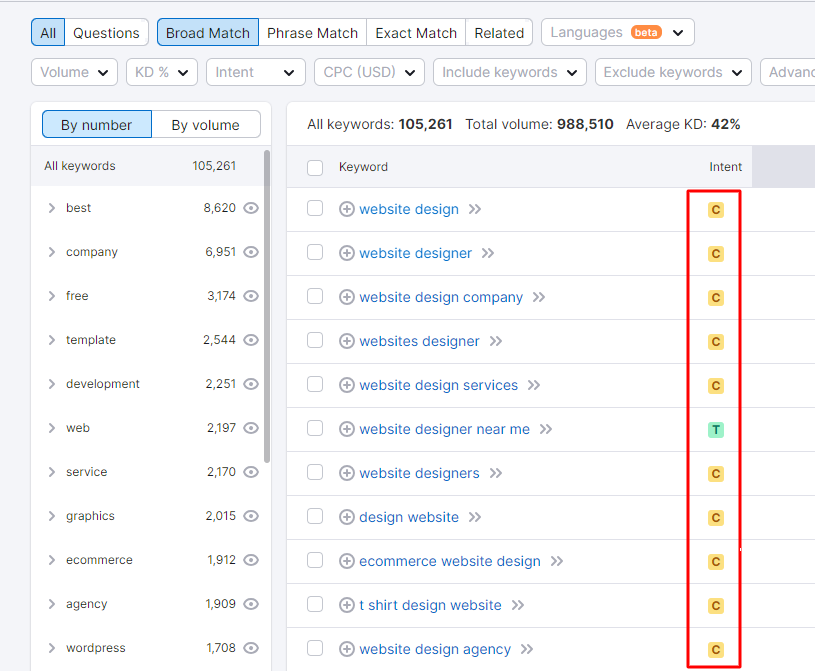
3. Make the Most of On-Page SEO
Although keywords are typically the first thing most people think of upon hearing ‘landing page SEO optimization,’ there’s more to it. Your content must have a structure that allows search engine bots to read, identify, and assess it.
Otherwise, bots might not understand your landing page, resulting in indexing problems. That’s where on-page SEO enters the picture.
Here’s what you should pay attention to when optimizing your website:
- Headings: Add an H1 tag and ensure it aligns with the page title. Including H2, H3, and H4 headings helps make the page’s content more readable. Improve the structure with secondary keywords, as that will give content a natural flow and make it more understandable for search engines.
- Title Tag: Your potential customers will first see the page’s title tag in the SERPs. Because of that, it should include the main keyword and be concise and captivating. Prioritize the targeted keyword and place it at the start of the title, while other, less significant words should come last.
- Meta Description: Appeal to users with a succinct meta description and nudge them to choose your landing page when browsing search results. This element is crucial for telling potential customers what your content is about, so include your primary keyword.
- Alt Text: All the images on the landing page should include an alt text in an HTML file. That allows search engine bots to read them and understand your content. Moreover, alt text makes your site more inclusive, ensuring visitors with visual impairments can understand the images using screen readers. And if the pictures don’t load, users can still see alt text.
- Internal Links: Use relevant anchor (ideally, the primary keyword) text when including internal links. These will help search engines comprehend your page’s content and context.
4. Optimize Your Landing Page URL
It might be a detail, but you also optimize the URL, as it helps share information about your page’s content. Keep it short (maximally 65 characters), don’t use capital letters, and separate words with hyphens and different concepts with forward slashes.
Position the most important keywords on the left, and ensure humans understand your URL just as much as search engines. People should have an easy time telling the general category and subcategory from the page’s URL. On the flip side, bots should quickly identify whether something is a cluster of a pillar page.
5. Track Page Speed and Performance
One of the fundamental strategies in providing excellent user experience is ensuring your landing page loads fast. Otherwise, you’ll likely encounter high bounce rates and frustrated visitors.
That could lead to poor ranking in the SERPs and an inability to attract new customers. Hence, you must regularly track and assess your landing page speed and performance.
Monitor how fast the main content appears when users land on the page and whether they can effortlessly interact with each element (e.g., button taps). You can increase the speed by minimizing the number of requests your page sends, eliminating redirects, and using smaller pictures.
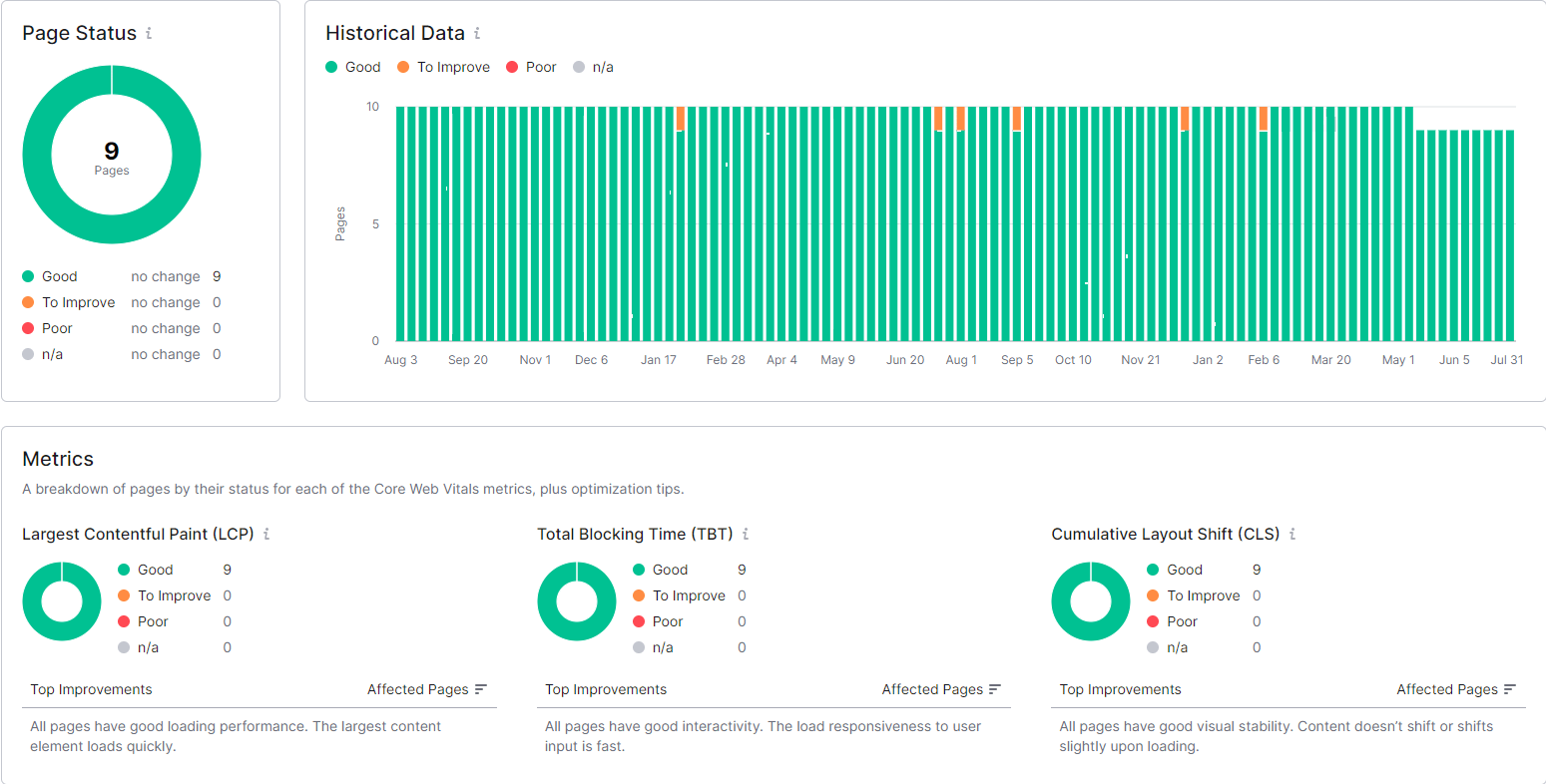
6. Include Backlinks
Other platforms and websites redirecting visitors to your landing page will increase its credibility and reputation. However, only share backlinks with high-ranking and authoritative sites, as that will boost your SEO.
You can acquire backlinks by creating engaging and informative content (e.g., infographics, videos, and stats) people like to share. But you can also publish helpful content on respected platforms and social media, such as Medium and LinkedIn.
Research how your competitors fare in this regard. Check what and how many backlinks they use, as that can guide you on where to look for good opportunities.
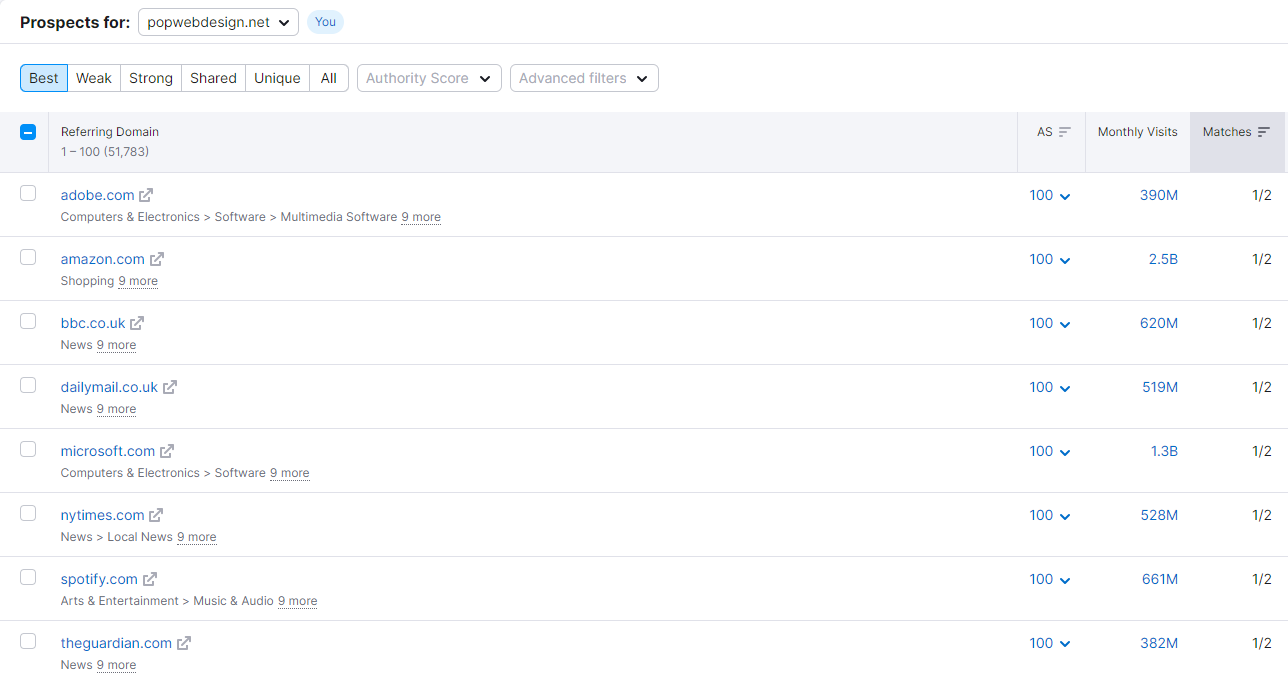
7. Use A/B Testing
Before you release your landing page to the public, create two versions and run A/B testing to compare them. Although only 17 percent of marketers use this technique, it can significantly improve conversions.
A/B testing can help you pinpoint potential pain points that increase bounce rates and identify which version resonates better with the audience. That also enables active refinement, as you can continuously test new elements and changes.
8. Add Videos
Regardless of the nature of your products and services, people love to see a visual representation. Whenever possible, add engaging videos and use them to showcase your offering.
As most visitors skim the text, this can help you get the right message across and increase conversions by 86 percent. Ensure that the videos are of high quality and serve as a relevant visualization of your content.
9. Remove Excess Copy
You might have the most captivating copy, but visitors are increasingly impatient and unwilling to read long texts. Aim for the most essential points instead of describing the product or service in detail.
Be concise, clear, and persuasive. Eliminate unnecessary copy and links; you might convert 30 percent more leads.
10. Reduce Landing Page Distractions
Streamline the user experience and increase engagement by reducing excessive pop-ups, irrelevant content, and cluttered layouts. These can deter visitors from taking desired actions, affecting conversion.
But eliminating those elements helps maintain the focus on the primary CTA. Prioritize simplicity, relevance, and a clean design to make your products and services stand out and attract customers.
11. Create Personalized CTAs
Tailor CTAs buttons to align with user intent and preferences, as that helps drive higher engagement. As a result, your landing page will resonate with visitors, enticing them to take specific actions that suit their needs.
Create a user-centric approach using language that speaks directly to your target audience and compelling, relatable visuals. As a result, you will foster a greater sense of connection with your users, unlocking higher conversions.
12. Reinforce Landing Page SEO with UGC and Testimonials
Showcase authentic feedback and experiences from satisfied customers to establish trust and credibility. Boost your SEO with user-generated content (UGC) and reinforce the value of your products or services.
Actively using testimonials and UGC drives social proof and encourages visitors to take action. This practice can help you increase conversions by 36 percent and increase your brand’s credibility.
Final Thoughts
No landing page attracts, nor converts leads solely by being aesthetic and packed with engaging content. It takes much more to rank high in the SERPs and earn trust from potential customers.
But it all starts with well-thought-out SEO practices. Efforts, such as URL optimization and keyword research, are only some strategies among many that ensure your site performs well.
As a result, landing pages often require a skilled and professional SEO agency approach. However, these practices are fundamental for good rankings, consistent traffic, and high conversion rates, so opting for professional help pays off in the long run.


